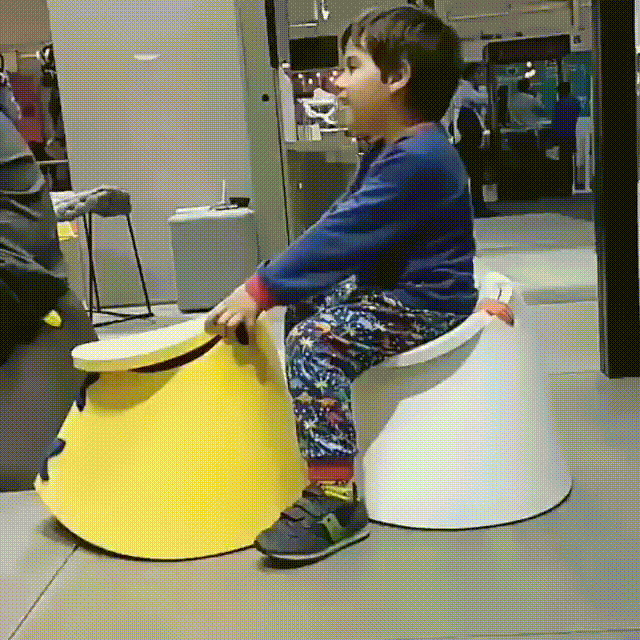


Embodying the curiosity of a cat
and thoughtful persistence of a tortoise, I explore and engage with
complex social issues in a deep and playful manner and find creative ways to address them.
Over the past eight years, I have worked in close partnerships with cross-cultural teams across six countries
Ayushi Jain

Ellen MacArthur Foundation, UK
The New School, NY
GEHT Appliances, China
InWithForward, Canada
Instillmotion Consulting Pvt Ltd
ENSA, France
National Institute of Design, India
IFB Industries Ltd
Godrej Design Lab
Herman Miller Inc.
The Design Gym
Shipibo-Conibo Center
Stanford Impact Labs
CASE STUDY
Towards equitable philanthropy
Strengthening equity within the systems change grant with Vancouver Foundation, BC
Vancouver Foundation is Canada’s largest community foundation and administers over 1,600 funds and assets totaling $930 million. In evaluating their 'systems change' grant, they found that not all communities benefited equally. Organizations from rural and indigenous communities seem to fare worse in the process. InWithForward was brought onboard to develop ways to deepen impact and strengthen equity in the 'systems change grant.' Over the fall of 2020, we set-up a series of virtual co-design sessions focussing on equity-denied and equity-seeking community organizations.
Learnings from the co-design sessions informed immediate design interventions and an ongoing long term change.
BIAS CARD DECK
Every grant cycle, VF engages community members in the decision making process. About 75 members volunteer their time to read and access the applications. The matrix of recommendations included indicators such as ‘well-articulated issues,’ ‘partnerships,’ ‘likelihood of success’ etc. These being left open to individual interpretation, biases can often creep in and may go unchecked.
We created a deck of cards to assist reviewers as they read the applications. These cards explicitly name the dominant logic along with flipped logic as alternate ways to consider the application.
PROJECT PARTNERS: Vancouver Foundation and InWithForward, Canada
ROLE: Workshop design, Graphic design
TAGS: Equity, Grantmaking, Challenging dominant logics
01
Bias cards: A deck of cards to assist reviewers as they read through applications. Click to view all.


Eventbrite invitation for co-design sessions with community organizations

Co-design session with Vancouver Foundation team
Rethinking the grant application evaluation process from an equity lens
I designed a poster to capture our collective values as we began this metaphorical journey into the unknown woods.
CASE STUDY
Lost in Transition
Reimagining Student Veteran Support Services with City Tech, NY
To understand how our systems care for student veterans and explore how design might serve to support these systems, we partnered with the veteran student service (VSS) office at City Tech College, New York. During our co-design workshops, students spoke about feeling alone and isolated after leaving the military services. Our study showed that this could be linked to a veteran’s experience of transitioning from a strong sense of camaraderie in the military to an individualistic and alienating modern society. This experience was amplified in a commuter campus such as that of City Tech. Keeping in mind the limited financial and space resources, we designed an intervention to help foster a sense of community without necessary physical proximity.
The ‘handbook of unlearning’ illustrates the cultural differences that veterans may experience in school. Each year the senior students add their own little anecdotes and give it to the incoming first-year students during orientation. This artifact of the veteran community is situated in the VSS office. It builds and grows with the students, a reminder of the community that exists.
PROJECT PARTNERS: Veteran Student Service office, City Tech, New York
ROLE: Design-led-research, Concept development, Graphic design
TAGS: US Veteran, Community Engagement, Service Intervention

Handbook of Unlearning
02
A co-designed handbook to help strengthen a sense of community among student veterans transitioning from military to civilian life.

.png)
Journey mapping workshop with veteran students and staff, City Tech

CASE STUDY
A tale of (two) toilets
Re-thinking the rail coach toilet experience for Indian Railways
Working with the Ministry of Railways in 2015, we worked on redesigning the rail coach toilets, which were to be implemented in all new rail coaches. The field research began with traveling on trains to role-play and understand the existing passenger experience. To build a deeper understanding of the ecosystem surrounding a toilet, we visited the New Delhi and Ahmedabad rail yards and the Kapurthala rail coach factory.
During the interviews with the maintenance crew, it was identified that the toilet fan blades would get stolen during night hours and were sold in scrap markets. This unique challenge was later addressed in the design by the use of bladeless fan technology. This “invisible” fan did its job of proper airflow while ensuring the metal parts are hidden away from the users.
Designing of 3.8 ft x 4.2 ft toilet needed a detailed assessment of 17 individual components. The final design could emerge in various combinations of different components. We made 80 alternative idea cards with detailed pros and cons of each design. While some design proposals could be implemented immediately, others required infrastructural changes and had a longer timeline.
A select few of the design interventions we proposed have been adopted in coach toilets across train networks in India.
CLIENT: Ministry of Railways, Government of India
ROLE: Research, Prototyping and testing, Concept development
TAGS: Participatory research, Public toilet design
03
Future Posters created by veterans during the co-design workshop
Designing components of rail coach toilets
to enhance the user experience
and ease maintenance for railways


KEY DESIGN FEATURES
Anti-theft bladeless fan
Pneumatic jet for floor cleaning
Diagonal placement of WC
Seat sanitizing mechanism
Low pressure use- Bidet shower
Litter bin placement under the basin
Visit to rail coach factory, Kapurthala

Toilet design 3D Render


To-scale mock-up to test different layouts and ergonomics

CASE STUDY
Interrupted Flow
Rethinking passenger movement in one of India’s international airport
In 2016, an Indian metropolis airport started receiving higher than expected passenger traffic. Delayed passengers and gate-no-show scenarios started becoming routine. The terminal was receiving 15 million passengers per year against a designed capacity of 12 million. As a member of the Instillmotion design team, we partnered with the terminal operator to address the issue of terminal congestion whilst ensuring a pleasant passenger experience. To probe deeper into the problem, we conducted extensive research by observing and talking to passengers, conducting participatory research activities, interviewing airline ground staff, airline managers, the CISF (security) personnel, and the deputy CASO. We also spoke to the operations team to understand the day to day working and the challenges faced by them. It was observed that the three main bottlenecks were the entry gate, the airline check-in counter, and the security check area. We developed a series of interventions that reduced the time taken by passengers by 50%. The unique interventions designed for the security check area have also been adopted in other Indian airports.
ROLE: Research, Concept development, Graphic design
TAGS: Participatory research, Process innovation, Aviation
A number of concepts were prototyped and tested. The concepts adopted by the client have not been presented in the description due to a non-disclosure agreement.
04

Process innovation to support increased passenger traffic in the airport terminal.
Shadowing exercise to understand passenger movement

Card-sorting exercise with passengers


CASE STUDY
Happy to help
Challenging business models of developmental "aid"
As a speculative inquiry, we re-imagined the structures of aid that shape international development work. We designed provocations that explore the issues, inequities, and injury related to and resulting from practices generally described as “social impact,” “philanthropy,” and “helping.”
ORGANIZATIONAL APOPTOSIS
Philanthropic organizations are founded with a clearly stated mission and expiration date. Once they reach the end of their term (i.e. 25 years), they must disburse all of their funds. Near the end of their term, they plan out their death, reflect on what they did and learned in a “vigil,” and share those reflections in the form of an “obituary” with the public.
Confronting their mortality pushes organizations to be more clear, purposeful, and transparent about how they approach their work—the same way that reflecting on our own imminent deaths can help us uncover how we really want to live our lives. It also prevents organizations from pushing off the impact of their work to a nebulous future; rather, it helps them focus on present-day challenges, as well as on what can be done now to prevent worsening outcomes later (especially for issues like climate change).
ROLE: Futuring, Visual Design
TAGS: Speculative design, Mutual aid
05

Organizational Apoptosis: Self-induced death of organizations when it takes more resources to maintain them
What if developmental aid agencies were honest?

The webpage infused with sarcastic humor facilitates non-hierarchical and reflexive forms of engagement, making colonial systems and power relationships apparent. Click to view.
CASE STUDY
The Novel Times
Dismantling generational power structures
As a speculative inquiry, we imagined a world where recurring pandemics became the norm. Thanks to their superior immune systems, children rose to power, proving to be much better world leaders than adults. In fact, the division between “childhood” and “adulthood” softened, and new ways of cross-generational collaboration emerged. We conducted research on life stages and imagined this Town Hall scenario with input and leadership from the brilliant children in our lives.
ROLE: Futuring, Visual Design, Animation
TAGS: Speculative futures, Cross-generational
06
CASE STUDY
Moi seat
A seat children can truly call their own!
The kids’ furniture one encounters in playschools are typically miniatures of the adult versions. Their hard surfaces, complex assembly and awkward bulk render them inappropriate, if not dangerous for children. Toying around with the concept of folding furniture, I designed a method to cut, fold and fasten a single foam sheet to make a seat. The seam gives it enough stiffness to take weight of upto 50 kilograms. The use of a single sheet simplified the manufacturing process, drastically reducing cost and making product recycling easier.
AWARD: Won Godrej Design Lab 2016
PRODUCT EXHIBIT: India Design Week 2017
PUBLICATION: Architectural digest 2016; Afilii Children Magazine
TAGS: Kids furniture, Folding furniture design, Circular economy
07


Flat-pack foam seat for kids

Illustrations +
Writing

ILLUSTRATIONS
see my posts on instagram: coming soon




